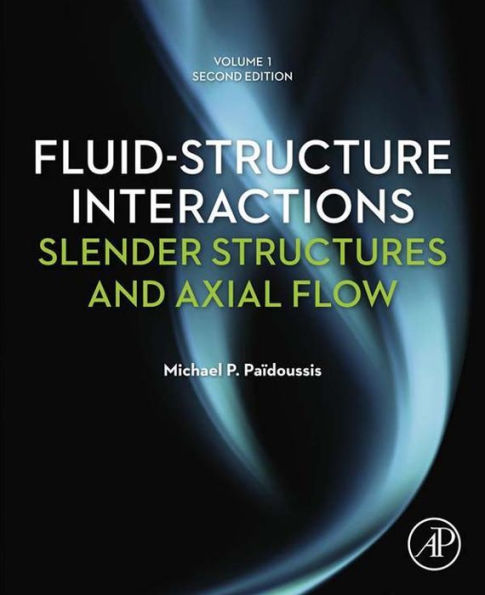The first of two books concentrating on the dynamics of slender bodies within or containing axial flow, Fluid-Structure Interaction, Volume 1 covers the fundamentals and mechanisms giving rise to flow-induced vibration, with a particular focus on the challenges associated with pipes conveying fluid.
This volume has been thoroughly updated to reference the latest developments in the field, with a continued emphasis on the understanding of dynamical behaviour and analytical methods needed to provide long-term solutions and validate the latest computational methods and codes.
In this edition, Chapter 7 from Volume 2 has also been moved to Volume 1, meaning that Volume 1 now mainly treats the dynamics of systems subjected to internal flow, whereas in Volume 2 the axial flow is in most cases external to the flow or annular.
- Provides an in-depth review of an extensive range of fluid-structure interaction topics, with detailed real-world examples and thorough referencing throughout for additional detail
- Organized by structure and problem type, allowing you to dip into the sections that are relevant to the particular problem you are facing, with numerous appendices containing the equations relevant to specific problems
- Supports development of long-term solutions by focusing on the fundamentals and mechanisms needed to understand underlying causes and operating conditions under which apparent solutions might not prove effective
The first of two books concentrating on the dynamics of slender bodies within or containing axial flow, Fluid-Structure Interaction, Volume 1 covers the fundamentals and mechanisms giving rise to flow-induced vibration, with a particular focus on the challenges associated with pipes conveying fluid.
This volume has been thoroughly updated to reference the latest developments in the field, with a continued emphasis on the understanding of dynamical behaviour and analytical methods needed to provide long-term solutions and validate the latest computational methods and codes.
In this edition, Chapter 7 from Volume 2 has also been moved to Volume 1, meaning that Volume 1 now mainly treats the dynamics of systems subjected to internal flow, whereas in Volume 2 the axial flow is in most cases external to the flow or annular.
- Provides an in-depth review of an extensive range of fluid-structure interaction topics, with detailed real-world examples and thorough referencing throughout for additional detail
- Organized by structure and problem type, allowing you to dip into the sections that are relevant to the particular problem you are facing, with numerous appendices containing the equations relevant to specific problems
- Supports development of long-term solutions by focusing on the fundamentals and mechanisms needed to understand underlying causes and operating conditions under which apparent solutions might not prove effective

Fluid-Structure Interactions: Slender Structures and Axial Flow
888
Fluid-Structure Interactions: Slender Structures and Axial Flow
888
Product Details
| ISBN-13: | 9780123973139 |
|---|---|
| Publisher: | Elsevier Science & Technology Books |
| Publication date: | 12/07/2013 |
| Sold by: | Barnes & Noble |
| Format: | eBook |
| Pages: | 888 |
| File size: | 28 MB |
| Note: | This product may take a few minutes to download. |
